Red Root Floater (Phyllanthus Fluitans), a plant that’s fast becoming a favourite in the aquarium community. is noted for its strikingly vibrant green leaves and vivid red roots.
With its small size and moderate growth rate, Red Root Floater is suitable for various tank sizes and styles. Beyond its aesthetic appeal, this plant offers several benefits, including nutrient absorption, shade provision, and potential breeding habitats for fish.
Table of Contents
Red Root Floater Care
Red Root Floater is a floating plant species native to the Amazon River Basin in South America. With its vibrant red roots and small round leaves, it adds a stunning touch to aquariums. This low-maintenance plant is highly sought after by aquarists, as it requires minimal care while providing numerous benefits.
Red Root Floater helps control nutrient levels in the water, offers shade for other aquatic life. Its adaptability and ease of propagation make it a popular choice for both beginners and experienced fish keepers.
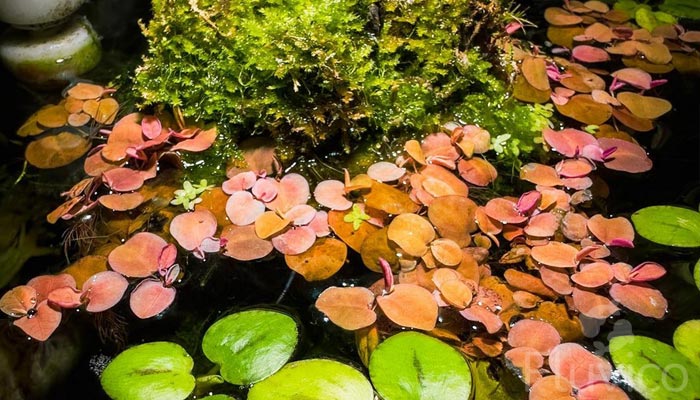
The Benefits of Having It In Your Tank
Having Red Root Floater in your tank offers a range of benefits the overall health of your aquatic environment. Here are some advantages of incorporating it into your tank:
- Natural Water Purification: Red Root Floater is known for its ability to absorb excess nutrients, such as nitrates and phosphates, from the water. This helps to maintain a balanced and healthy aquatic ecosystem by reducing the risk of algae overgrowth.
- Shade Provider: The floating leaves of Red Root Floater create shaded areas in the aquarium, which can be beneficial for other light-sensitive plants and fish species that require shelter or reduced light intensity.
- Oxygenation: As a floating plant, Red Root Floater helps in the oxygenation process by releasing oxygen into the water during photosynthesis. This can enhance the overall oxygen levels in your tank, benefiting the inhabitants.
- Natural Habitat Simulation: Including Red Root Floater in your aquarium can mimic the natural habitats of certain fish species, creating a more comfortable and familiar environment for them. This can promote natural behaviours and reduce stress in fish.
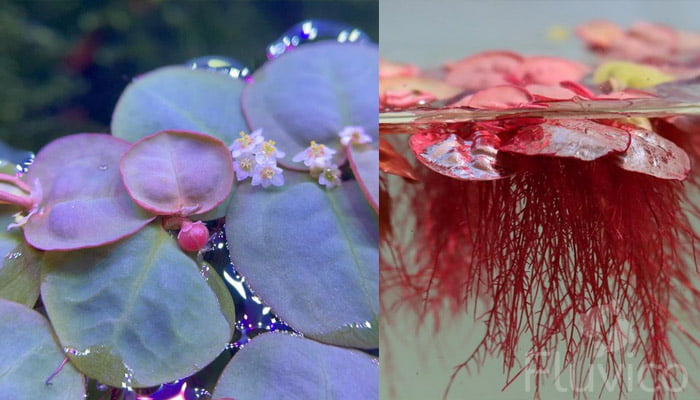
Size & Growth Rate
Red Root Floater typically stays small in size, with its leaves averaging around 1-2 centimeters in diameter. As for growth rate, it is considered moderate, making it manageable for most aquariums.
Related: View our latest Aquarium Plant Guides Here!
Red Root Floater vs. Frogbit
Red Root Floater and Frogbit are two popular floating aquatic plants that share some similarities but also have distinct differences. Here are the similarities: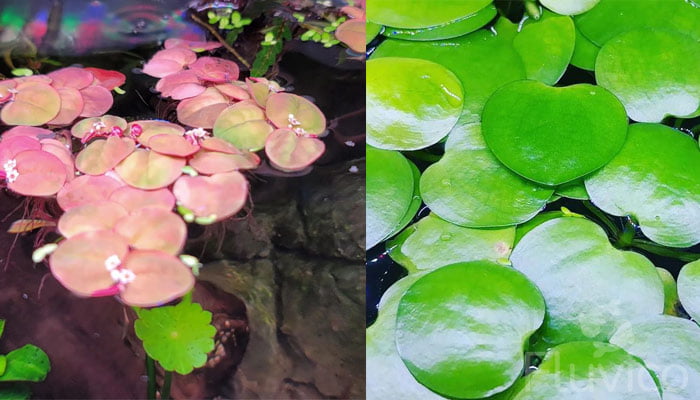
Similarities Between Red Root Floaters and Frogbit:
- Floating nature: Both Red Root Floater and Frogbit are floating plants, meaning they naturally float on the water’s surface.
- Nutrient absorption: Both plants help absorb excess nutrients from the water, aiding in water quality management.
Differences Between Red Root Floaters and Frogbit:
- Appearance: Red Root Floater has small, round leaves with vibrant red roots, while Frogbit has larger, heart-shaped leaves with white roots.
- Growth rate: Frogbit has a faster growth rate and can quickly cover a large area.
- Light requirements: Floaters thrives in moderate to high lighting conditions, while Frogbit can tolerate lower light levels.
- Size: Frogbit can grow larger than Red Floaters, with leaves reaching several centimetres in size.
Tank Setup and Maintenance
Tank Size
- The minimum recommended tank size for Red Root Floater is 10 gallons (38 liters).
- Providing a larger tank with more surface area is beneficial for the plant’s growth and spread.
- A larger tank offers better stability in terms of water parameters.
- Ample space in a larger tank allows for harmonious coexistence with other aquatic inhabitants.

Water Parameters
Maintaining appropriate water parameters is crucial for the health and well-being of Red Root Floater (Phyllanthus Fluitans). Here are the recommended water parameters for this floating plant:
- Temperature: 68°F to 82°F (20°C to 28°C)
- pH: 6.0 to 7.5
- Hardness: Soft to moderately hard water (4 to 12 dKH)
- Ammonia and Nitrite: 0 ppm
- Nitrate: Below 20 ppm
It is essential to regularly test and monitor these parameters using reliable aquarium test kits. Keeping the water within these optimal ranges will help ensure the successful growth and overall vitality of Red Root Floater in your aquarium.
Lighting
- High-light environment: Red Root Floater (Phyllanthus Fluitans) thrives in a high-light environment in the aquarium.
- Aquarium LED light: Use specialized aquarium LED lights designed for plant growth to provide optimal lighting for Red Root Floater.
- Light duration: Aim for a recommended photo-period of 8 to 10 hours per day to ensure sufficient light exposure.
- Consistency: Maintain a consistent lighting schedule using a timer to mimic natural day-night cycles and promote healthy growth.
- Avoid overexposure: Avoid excessive lighting as it can lead to algae overgrowth and cause stress to the plant.
- Regular maintenance: Clean the light fixtures periodically to prevent the buildup of algae and dust, ensuring maximum light output.
Substrate
Red Root Floater is a floating plant and does not require a specific substrate. However, a fine-grained or sandy substrate can be used for aesthetic purposes or to anchor other plants in the aquarium. Regular cleaning is important for water quality, even though Red Root Floater obtains nutrients primarily through its floating roots. 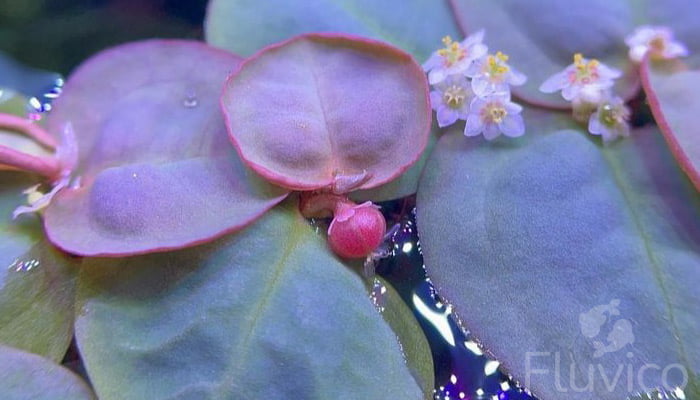
Water Flow
- Gentle water flow: Red Root Floater prefers a gentle water flow in the aquarium.
- Avoid excessive flow: High water flow can cause the plant to break apart or drift away from its desired position.
- Positioning: Place the outflow of filters or power-heads to minimize disturbance to the floating plant.
- Diffuser or baffle: Use a diffuser or baffle to reduce water flow and create a calmer environment around the Red Root Floater.
- Maintain stability: Gentle water flow helps the plant stay in place and maintain its desired aesthetic in the aquarium.
CO2 and Fertilization
- CO2 supplementation: Red Root Floater (Phyllanthus Fluitans) can benefit from supplemental CO2 in a high-tech planted aquarium setup.
- CO2 injection: Consider using a CO2 injection system to provide a steady supply of carbon dioxide to support the growth and health of the plant.
- Fertilization requirements: Red Root Floater has modest nutrient demands and can benefit from regular fertilization with a balanced aquarium plant fertilizer.
- Micro and macro nutrients: Ensure the fertilizer provides a combination of essential micro and macro nutrients such as nitrogen, phosphorus, and potassium.
- Monitor and adjust: Regularly monitor nutrient levels and adjust fertilization as needed to maintain optimal growth and prevent deficiencies or excesses.

Planting and Propagation
How To Plant Red Root Floaters
Planting Red Root Floaters (Phyllanthus Fluitans) is a straightforward process due to their floating nature. Here’s how to plant them in your aquarium:
- Prepare the tank: Ensure that the tank water parameters, lighting, and filtration are suitable for Red Root Floaters.
- No planting required: Red Root Floaters are floating plants and do not need to be planted in the substrate. Simply let them float on the water’s surface.
- Add the plants: Gently place the Floaters on the surface of the water. Make sure they are evenly distributed and not overcrowded.
- Adjust placement: Arrange the plants as desired, ensuring they have enough space to spread and receive adequate light.
- Maintenance: Regularly remove any excess or overgrown Red Root Floaters to maintain a balanced and visually appealing display.
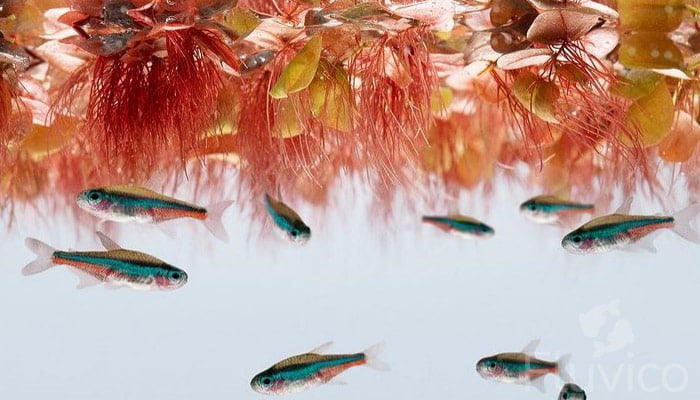
Trimming & Pruning
Trimming and pruning Red Root Floaters is important to maintain their health, prevent overcrowding, and promote optimal growth. Here’s how to trim and prune them effectively:
- Observe growth: Regularly observe the growth of your Red Root Floaters to identify areas that require trimming. Look for dense patches or excessive growth.
- Use clean tools: Ensure your scissors or pruning tool is clean and sterilized to prevent the introduction of harmful bacteria or pathogens.
- Trim excess growth: Carefully trim excess or overgrown portions of the Red Root Floaters. Cut close to the base of the plant, removing any yellowed or damaged leaves.
- Promote even growth: Trim selectively to maintain an even and balanced appearance. Avoid cutting too many plants at once to prevent excessive stress.
- Dispose of trimmings: Collect and remove the trimmed portions from the tank to prevent them from decomposing and affecting water quality.
By regularly trimming and pruning your Red Root Floaters, you can keep them in optimal condition, prevent overcrowding, and ensure a visually pleasing display in your aquarium.
Propagation Techniques
- Separation: Gently separate smaller plants or side shoots from the parent plant and allow them to float freely or plant them in another area.
- Floating fragmentation: Break apart dense clumps of Red Root Floaters into smaller sections and float them or plant them in different areas of the tank.
- Floating runners: Detach runners with plantlets from the parent plant and float them or plant them in desired locations.
- Cuttings: Take stem cuttings with sufficient leaves and roots and float or plant them in the tank.
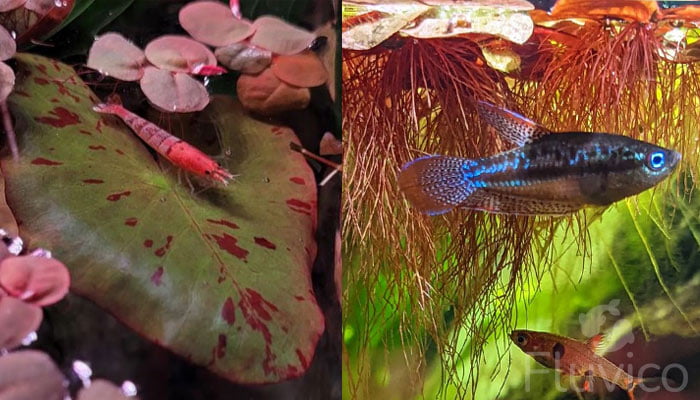
Red Root Floater and Aquarium Fish
Red Root Floater (Phyllanthus Fluitans) can coexist peacefully with various aquatic species. However, it’s essential to consider compatible tank mates that won’t damage or overshadow the delicate floating plant. Here are some suitable tank mates for Red Root Floater:
Suitable Tank Mates
- mall peaceful fish: Species like neon tetras, guppies, dwarf rasboras, or ember tetras are generally suitable as they won’t disturb the floating plant.
- Shrimp: Shrimp species such as cherry shrimp, amano shrimp, or ghost shrimp can peacefully inhabit the same tank and complement the aesthetic appeal.
- Snails: Snails, such as nerite snails or ramshorn snails, can coexist with Red Root Floater and help clean the aquarium by consuming algae.
- Small bottom-dwelling fish: Consider species like Corydoras catfish or small loaches that primarily occupy the bottom region of the tank, minimizing interference with the floating plant.
- Non-aggressive surface-dwelling fish: Certain surface-dwelling fish like hatchetfish or peaceful Gouramis can be suitable as they occupy a different level of the aquarium.
Fish to Avoid
- Herbivorous fish: Fish species that primarily feed on plants, such as Silver Dollars or some species of Plecos, may consume or damage the Red Root Floater.
- Aggressive fish: Aggressive species like aggressive cichlids, barbs, or larger predatory fish can harass or nip at the leaves, causing stress and damage.
- Bottom-dwelling diggers: Fish species that constantly dig or disturb the substrate, such as some species of loaches or cichlids, may uproot or damage the plants.
- Fin-nipping fish: Fish known for fin-nipping behaviour, like Tiger Barbs or some tetra species, may nip at the delicate leaves or roots.
- Fish requiring high water flow: Species that prefer strong water currents, like hillstream loaches or some danios, can create excessive turbulence that may affect the floating nature of the plant.
Always research the compatibility of potential tank mates before introducing them to the same tank to maintain a harmonious aquatic environment. 
Related: View our latest Aquarium Plant Guides Here!
FAQ
Is red root floater safe for turtles?
They may not be suitable for turtles as they can damage the delicate roots and leaves. Turtles’ feeding behavior and water disturbances may also hinder the plant’s survival.
Are red root floaters invasive?
Yes, they can be invasive. It has the potential to rapidly spread and outcompete native plant species, disrupting natural aquatic ecosystems. Prevent its release into natural water bodies.
Why are my red root floaters dying?
There could be various reasons why your plants are dying, such as inadequate lighting, poor water quality, lack of nutrients, or incompatible tank mates. Evaluate and adjust these factors to provide the optimal conditions for the plants’ health and growth.
How to get red root floaters red?
To enhance the red coloration of your plants, provide them with high-intensity lighting, adequate nutrient levels (particularly iron and micronutrients), and stable water parameters. Adjust lighting and nutrient dosing accordingly, and monitor plant health to achieve desired red hues.
More Reading

15 Types of Cryptocoryne: Which is Best For Your Aquarium Setup?

16 Awesome Low Light Aquarium Plants (Mosses, Ferns & Stem Plants)


18 Types of Aquarium Moss: Photos, Care, Propagation & Growth Guide
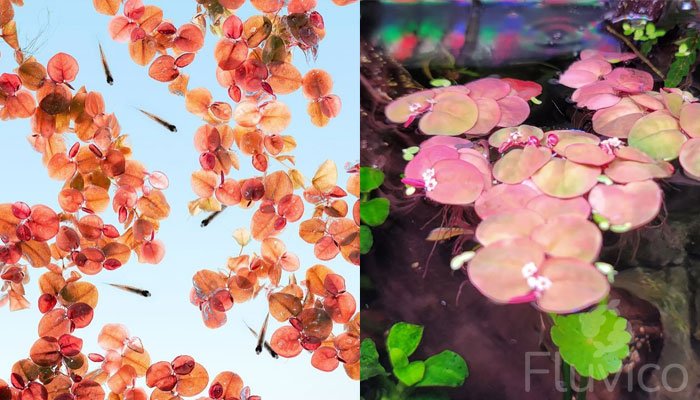
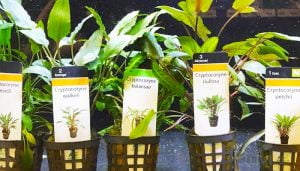
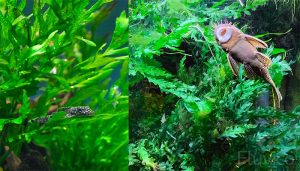


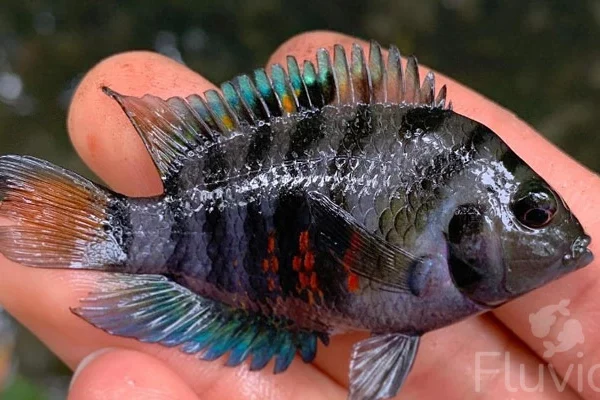

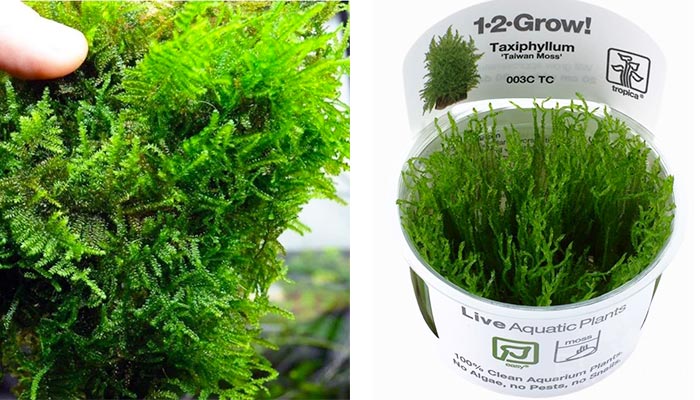
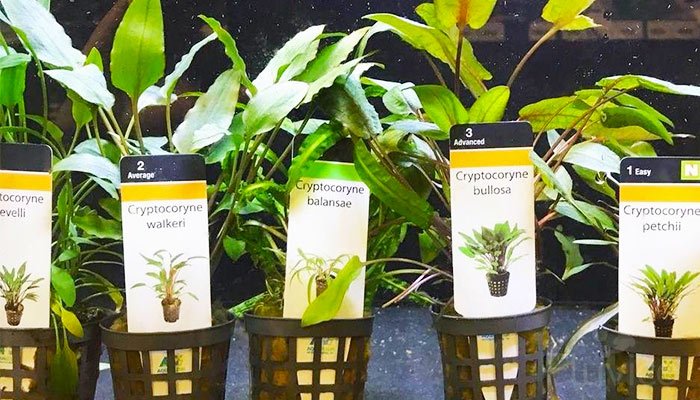
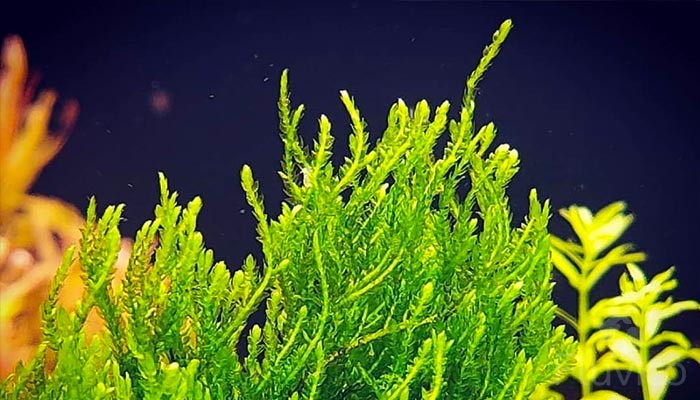
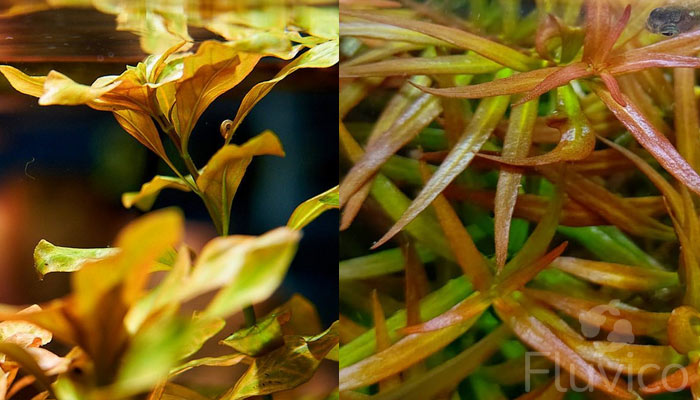
Hope you enjoyed our Red Root Floater Care Guide! As always if you have any questions or tips of your own, comment below.
All the best,
Charlie